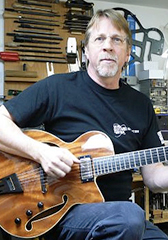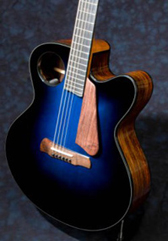When Lloyd Loar joined Gibson in 1919, the guitar world was turned on its head. Loar, who himself was not a luthier, but was a part-time musician and consultant to companies like GM and others, came in and took the famous guitar company by storm. Loar is credited with creating much of what today's archtop guitars feature: the arched top, floating bridge, and f-holes. Musicians of the time loved them.
Of course, different waves of music pushed different types of guitars into the spotlight, and in the 1950s, solid guitars took over, and many musicians left archtops behind. When compared to some of the more sleek solids, the archtop looked much larger and old fashioned.
Fortunately, the archtop would experience a renaissance. In the 1990s, some musicians started to come back to the instruments, and their popularity began to rise once more. Like the saying goes, "Everything old is new again."
Archtop guitars are no different. Still today, they're sought after instruments, and luthiers are booked years into the future to build custom guitars for interested customers.
Are you thinking of having an archtop guitar built on your behalf? Check out
Fine Archtops and get in touch with a skilled archtop guitar luthier today.













